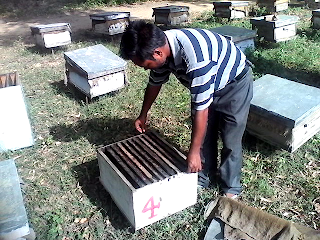Beekeeping isn’t just a hobby; it’s a vital endeavor that contributes to the delicate balance of our ecosystem. Finding the ideal location for your bee apiary is a crucial step in ensuring the health and productivity of your buzzing companions. Join us as we embark on a journey to discover the best locations for beekeeping, where the harmony between nature and these tiny pollinators creates a symphony of sweetness.
1. Blossoming Meadows of Tranquility
Imagine a vast expanse of wildflower meadows stretching as far as the eye can see. These undisturbed pockets of nature offer an abundant supply of nectar and pollen, providing bees with a diverse diet and boosting honey production. Nestling your apiary amidst these vibrant meadows ensures your bees have a year-round buffet of floral delights.
2. Orchard Serenity
Orchards, with their orderly rows of fruit-bearing trees, are another beekeeper’s paradise. Apple, cherry, and peach blossoms offer a profusion of nectar, while the trees provide shelter from harsh winds. The gentle hum of bees among the blossoms creates a scene reminiscent of an impressionist painting, capturing the essence of nature’s harmony.
3. Riverside Refuge
The proximity of water sources is vital for bees to quench their thirst and maintain the humidity levels within the hive. A bee apiary near a gentle river or a shimmering pond not only ensures their hydration but also provides a picturesque backdrop for your beekeeping endeavors.
4. Hillside Haven
Elevated locations, such as hilltops or sloping landscapes, offer bees protection from waterlogging during heavy rains. These elevated positions also grant a panoramic view of the surrounding flora, helping bees navigate and forage effectively.
5. Community Connection
Urban beekeeping is a growing trend that fosters a unique connection between people and pollinators. Rooftop gardens and community plots nestled within cities offer bees a surprising variety of nectar sources, from balcony plants to roadside flowers. The synergy between urban gardening and beekeeping underlines the significance of coexistence between human habitats and nature.
Selecting the perfect location for your bee apiary involves a delicate blend of nature’s offerings and the bees’ requirements. Each location offers a unique experience, but the common thread binding them is the essential role bees play in our ecosystem. Whether in the heart of a city or on a serene meadow, these humble insects continue to remind us of the interconnectedness of all living beings. So, venture forth and find your beekeeping sanctuary, where the buzz of bees and the beauty of nature harmonize in sweet perfection.
